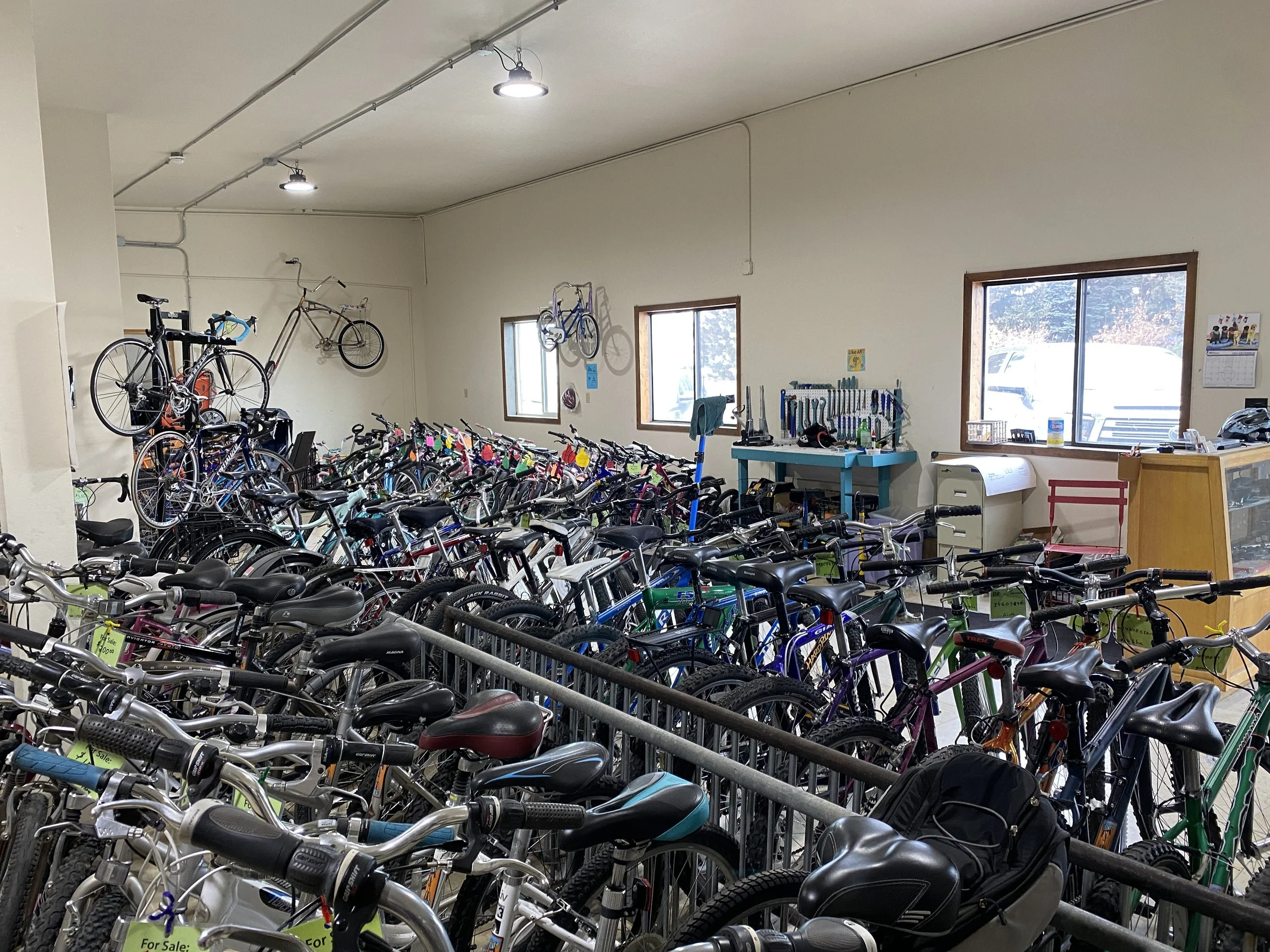
Community
The Bozeman Bike Kitchen: Giving a whole new meaning to “upcycling”
By Eric Welch
“Look at the joints.” Norm runs his hand over a welding seam on the teal frame of an old bicycle encrusted up to its spokes in snow. “That’s handmade.” He turns and points to another old bike. “The later ones are riveted. Those are the ones made in Taiwan.” We talked about old bikes for a few minutes. He turns back to the teal two-wheeler and frowns. “This really shouldn’t be out here. This should be on the wall.”
At the Bozeman Bike Kitchen, you can’t turn a corner without seeing a bicycle. They sit on repair stands in the workshop, stand in neat rows in the salesroom, hang from the ceiling of the garage, and lean stacked outside in long rows of twisted tubing and rubber. The bikes outside are the ones beyond repair—waiting to be stripped for parts and recycled by Norm. “He’s the undertaker,” says Rachel Rockafellow, Bike Kitchen volunteer, with a laugh.
The Bike Kitchen has a simple mission: spread cycling across the Gallatin Valley. According to shop manager Art Schwaller, the nonprofit organization got its start about 20 years ago in a driveway. Today, the Bike Kitchen offers access to workspaces for bicycle repair and refurbished bikes for sale at a permanent location in northeast Bozeman. In all, about 600 refurbished bicycles go out the door each year. “We end up giving away about half,” says Schwaller.
Shodair’s 2012 Miracle Child
By Ellie Reicks
Montana is home to the Shodair Children’s Hospital located in Helena Montana, the only children’s hospital in the entirety of the state. Shodair treats genetic and psychiatric patients from across the state of Montana. To many, Shodair is considered just another hospital that lies in the western side of the state but to Sam Faulkner, Shodair played a significant role in her life.
Sam Faulkner who grew up in Great Falls, Montana was clinically diagnosed with Stickler Syndrome at just 6 weeks old and was blood tested to confirm her diagnosis at 9 years old. Stickler Syndrome is a genetic connective tissue disorder that affects people in a variety of ways but for Sam it affects her joints, hearing, vision, stature, and facial features. Due to her genetic disorder, Sam must wear considerably thick glasses and hearing aids in order to see and hear as well as having a short stature. Sam got glasses at just 7 months old and hearing aids at just under 2 years old. Stickler Syndrome can also cause a variety of other issues depending on the person including a heart condition called mitral valve prolapse where the valve between the left and right chamber of the heart is affected. This can occur at any point of the patient’s life, because of this, all Stickler Syndrome patients are monitored closely and checked regularly for any indications of this condition. Due to her condition, Sam has had seven surgeries in her lifetime thus far. One of her main surgeries that she underwent when she was just 10 years old was the guided growth of the genu valgum where screws and plates were inserted into her knees and were then taken out when she was 12. As Sam continued to grow, she became knock-kneed which caused pain and misalignment of other joints. This knee surgery allowed Sam’s knees to grow straight which greatly improved her quality of life. Another significant surgery she underwent was cryotherapy where her retinas were frozen to negative 360 degrees Fahrenheit to keep the retina from detaching. Stickler Syndrome causes the retinas to be fragile and easily detachable with any impact to the head. Being treated for fragile retinas was critical to keep Sam from going blind.


